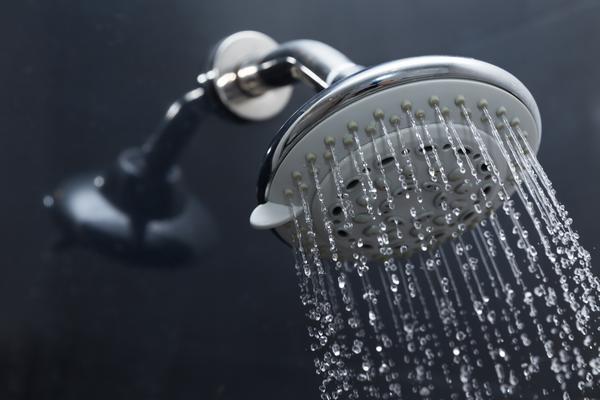5 Acrylic Shower Room Issues as well as Solutions
5 Acrylic Shower Room Issues as well as Solutions
Blog Article
{Source This Article The content which follows pertaining to 6 Things to Know About When Hiring a Plumbing Services is relatively fascinating. Don't bypass it. We recommend that you clean your acrylic bathing product made of Delta ProCrylic or Acrylic with Innovex Technology with non-abrasive soaps and cleaners, such as: When it’s time to clean, always use a terry cloth towel, soft cloth or sponge to avoid scratching the acrylic surface. Don’t use abrasive scrubbing pads, steel wool or sponges, cause permanent damage to the acrylic material. If you use a drain cleaner or clog remover, be sure to rinse thoroughly with water so no product is left standing near the drain. Some chemicals and cleaners may deteriorate acrylic surfaces, causing cracks and, potentially, property damage. To avoid this, don’t use cleaning products that state on their label that they are not suitable for use on Acrylic, ABS, Polystyrene or Plastic. Be sure to check the label of any product before you apply it to the surface; it’s easier to avoid damage than to try to remedy it. Chemicals we do not recommend using to clean acrylic showers/tubs: When you’re ready to apply sealant, a little planning goes a long way. Pick up some painter’s tape and use it to mask off the seam to help make cleaning up easier. When you’re applying the bead, use a constant, steady speed to avoid an uneven finish. Use a caulk tool or a plastic spoon to work the sealant into the joint. Wetting the tool with denatured alcohol will help create a smooth finish. Follow the directions on the back of the tube for cure time. Certain chemicals and cleaners may deteriorate acrylic surfaces, causing cracks and, potentially, property damage. After you’re finished applying it, clean up the product surface and remove any excess sealant with denatured alcohol. Don’t use solvents (turpentine, lacquer thinner, mineral spirits, paint thinner, MEK, xylene, acetone, naphtha, etc.) that can wreak havoc on an acrylic surface. With a little care and consideration, you can prevent damage to your acrylic shower or tub. Keep a supply of soft cloths handy and remove any damaging products or abrasive scrubbing items from the bathroom to ensure they aren’t around when it’s time to clean. https://www.deltafaucet.com/design-innovation/inspiredliving/how-to-clean-acrylic-shower I came across that content on Hiring a Plumbing Expert when looking around the web. For those who liked our blog post if you please don't forget to pass it around. Thanks for your time. Visit us again soon.
Acrylic bathrooms, shower trays, and other acrylic washroom ware have come to be more typical in washrooms in recent times. Thanks to modern-day chemistry we currently have options to enamel and also ceramic materials for shower room fixtures. These consist of plastic materials as well as various polers. Though not as stylish and sturdy as enamel and porcelain baths and fixtures, they are a lot more budget friendly and also serve virtually the very same standard function. These products are very easy to produce, store, and also transportation and also in the incidence of damages, they are easily fixed. Some typical examples of damage to acrylic bathroom fixtures include discoloration, splits, openings, and so on. Allow's have a look at several of these troubles and also fast means of repairing them.Damaged shower or bathroom surface area
Acrylic restroom fixtures are not abrasion-resistant like enamel selections. They are much more susceptible to scratches and much less resilient. Being a really soft material, acrylic scratches can also be concealed without covering or dental filling. For these, you should look for professional aid for your bath repairs. As an avoidance suggestion, stay clear of utilizing unpleasant sponges when cleaning. Rather, you should make use of an easy liquid cleanser with a soft pad.Chemical Reactions
In some cases, people attempt to repaint the whole surface of their acrylic bathroom by themselves either because they do not like the color to hide blemishes. Nonetheless, when they do not such as the outcome, they apply paint eliminators. You need to never ever use paint remover on acrylic bathrooms. Paint cleaners do not respond with the surface area of metal bathrooms, they damage acrylic baths irreversibly. This creates even more work for the specialist. The most effective strategy here is to call a specialist for help with changing the bathroom.Bath Discoloration
With long term use of acrylic baths comes staining or discoloration. While some spots can be removed easily, utilizing special chemicals, others require that the bath be resprayed. Aromatherapy oils loosen the dirt in some cases thereby restoring the bath to its former glory.Cracked Polymer Baths
The life expectancy of acrylic as well as fiberglass bathrooms depends on 15-20 years for shower pans and baths, typically. Cracks in an acrylic shower tray are possibly among the most convenient troubles to fix for a repair service specialist. The best part is you get to see the outcomes nearly right away. This is the same for PVC, material, as well as other such materials. A min fracture must be taken care of promptly before it spreads out more resulting in more serious damage. While these can be chosen a budget plan tackily, a professional can aid you get it made with even more finesse for a charge. Quick house repairs can be finished with epoxy materials yet if the result ends up inadequately, this would make the repair much more tough for a professional.
Polymer bathrooms, shower trays, as well as other acrylic restroom ware have actually become extra usual in restrooms in recent times. You must never make use of paint cleaner on acrylic baths. Paint cleaners do not react with the surface area of steel baths, they ruin acrylic bathrooms irreversibly. With prolonged use of acrylic baths comes discoloration or staining. The life expectancy of acrylic and also fiberglass bathrooms is up to 15-20 years for shower pans and baths, normally.How to clean Acrylic shower
USE THESE NON-ABRASIVE CLEANERS
DO NOT USE THESE CLEANERS
Sealant Application Tips

View Website